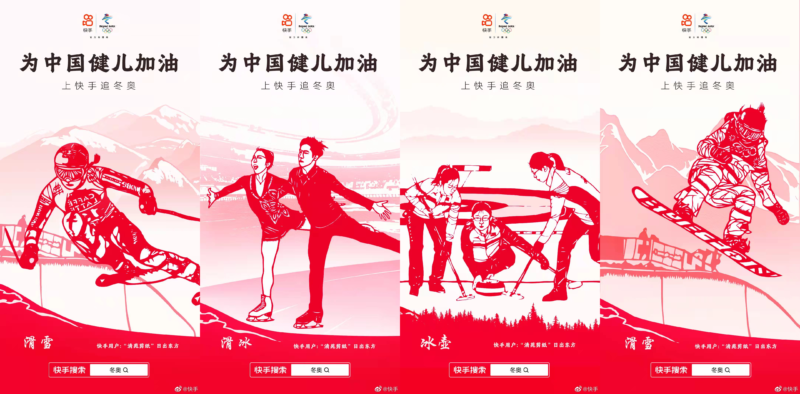Key takeaways:
- Traditional tourism attractions are losing ground among young tourists while niche scenery sites turn into new hotspots for the young.
- Xiaohongshu, replacing online travel agencies such as Ctrip and Fliggy, becomes the go-to for the Gen Z crowd to look for travel inspirations.
- In collaboration with China National Geography, Xiaohongshu’s the New Way We See China campaign uncovers the new tourism trends that are driven by the young generation.
“Disappearing” young tourists
If you are visiting some of China’s traditional tourism hotspots, you might have noticed that young Chinese have made less of the scene in those places. You are also not alone to think that a press of a shutter in front of landmarks is a rather old-fashioned tourist experience endorsed, mainly, by the pre-90s generation. So, where has China’s Gen Z cohort gone for travel? And what has their tourist experience been like?
Xiaohongshu reveals the new tourism driven by the young
Niche, coldplay and spiritual tourism are the short answer. These emerging trends have been spelt out in a short film titled the New Way We See China, produced by Xiaohongshu, China’s lifestyle sharing social media which is popular among young people.
The two-minute video is a fruit of the collaboration between Xiaohongshu and China National Geography, a Chinese monthly magazine generally covering the country’s geography, history and culture.
Young Chinese tourists today are redefining tourism with more personality and, what might be deemed as “madness”.
Released on the eve of China’s National Day, also known as the Golden Week for tourism, the video is part of Xiaohongshu’s campaign targeting users yearning to make the most use of the seven-day holiday for some “unusual” experiences.
Whether it is flying a kite on the Han costume while skateboarding in front of a traditional palace in Zhejiang or jumping into the East Lake in Hubei to sign off for the summer, young Chinese tourists today are redefining tourism with more personality and, what might be deemed as “madness”.
Be part of the scene
While the guochao trend has been the inspiration for these innovations, the national wave sees China’s Gen Z embrace their cultural roots whilst injecting modern cues into traditions. Voluntourism, in the meantime, appears to be gaining a foothold in one of China’s most lucrative markets. A growing interest has been shown to cause-related experiences, such as litter picking at the Tibetan plateau in Qinghai province, where the huge open-air trash pit has been the biggest threat posed by irresponsible tourist behaviour.
These changes are a result of the shift towards a richer and multidimensional tourist involvement.
These changes are a result of the shift towards a richer and multidimensional tourist involvement driven by the post-90s and 00. Rather than simply see a scene as an outsider, these young people want to be part of the scene. The preference for an immersive experience indicates that, for young visitors, tourism is not purely about sightseeing, but also about exercising self-value.
A platform that understands young tourists
Xiaohongshu has captured this evolution and this campaign is a release of its insights into the new generation of tourists in China. Possessing over 100 million monthly active users with post-90s accounting for more than 70%, Xiaohongshu has been an online community gathering group of dynamic youngsters.
Leveraging its beat in lifestyle sharing, the platform has also become the first stop for some 64% of regular travellers to discover places that are uncommonly known. This popularity at Xiaohongshu among the Gen Zers has surpassed that seen at traditional online travel agencies, such as Ctrip and Fliggy, according to the 2020 Tourism Industry Report published by Big Data Research.
Demands for desert safari, surfing and ice-skating inclusive trips are also on the rise.
Despite the restraints of the pandemic on tourism, the industry in China has shown the strength to recover with domestic travel pulling growth. Interestingly, places that traditionally attract mass tourism are now absent from the top 10 hot searches relative to travel on Xiaohongshu. Replacing these are camping in less commonly known rural areas, self-guided tours in small neighbouring towns and volunteer tourism.
The social media platform has been turning into a breeding ground for featured trips too. The search for camping on Xiaohongshu had seen a two-fold increase year on year as of May 2021, with published content of this topic surging by 80%. Whilst demands for desert safari, surfing and ice-skating inclusive trips are also on the rise on the platform as young tourists are becoming more drawn into these exotic tourist experiences.
Redefine tourism hotspots
China’s tourism industry has been undergoing a transformation as a result of these unconventional demands. Xiaohongshu has flagged up this new consumer trend and signposted the industry that tourism hotspots are no longer defined by how many photos scenery spots could attract visitors to take.
The young generation of tourists is looking for how many opportunities of unique and participable experiences they could get out of a scenic site. The industry is, therefore, expected to be sharper and more adaptive when it comes to identifying these young consumers’ new approaches to travelling.









